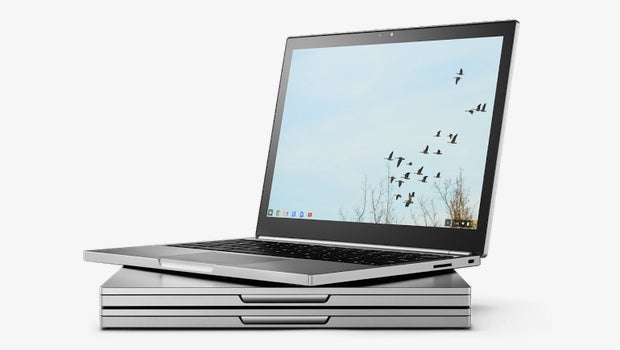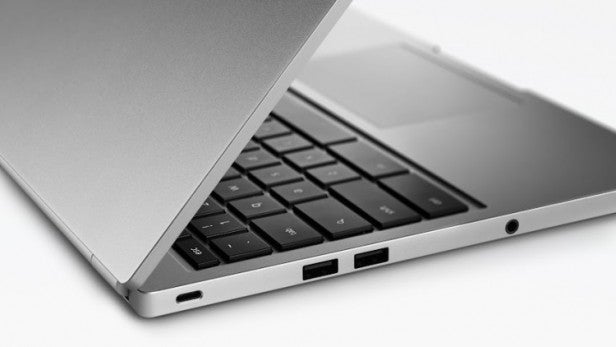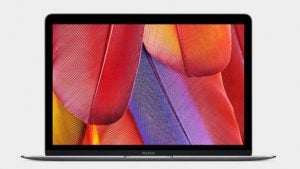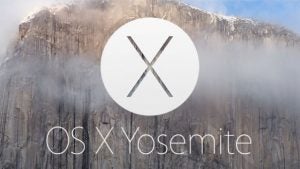Google Chromebook Pixel (2015) vs Apple MacBook (2015): Which should you buy?

Do you go Chromebook Pixel or new MacBook? Here’s how the specs match up
Google is set to launch its new Chromebook Pixel next week, which will add a classy new contender for the premium ultra-portable laptop throne.
Of course, that’s a throne that’s been newly threatened by the recent release of Apple’s sleek MacBook, which many feel will fundamentally alter the way laptops are developed in future.
So which is the better premium compact laptop – Google’s or Apple’s? Let’s take a closer look.
SEE ALSO: Best Laptops, Ultrabooks and Hybrids
Chromebook Pixel (2015) vs MacBook (2015): Design
Chromebook Pixel (2015): Anodised aluminium body, etched-glass trackpad, three-segment hinge lid, 1.5kg, 15.3mm thick
MacBook (2015): Anodised aluminium body, Butterfly keyboard, Force Touch trackpad, 0.92kg, 13.1mm thick
SEE ALSO: Surface Pro 3 vs 12-inch MacBook
Both of these laptops are handsome, desirable devices with high-end aluminium designs. However, these respective designs reflect a fundamentally different approach.
Google’s new Chromebook looks much like its previous effort, with a strikingly squared off design. It’s as handsome as it is solid.
The new MacBook, for its part, is all about portability, with an almost impossible slim tapered edge. Sure enough, it’s not far off half the weight of the Pixel, and it’s a fair bit thinner too.
There’s more design innovation in the MacBook’s keyboard and trackpad design, too. The former utilised a new butterfly mechanism for a more solid typing experience with less travel.
Meanwhile its Force Touch trackpad gives feedback and a unique level of pressure sensitivity without any physical travel.
Apple takes the design win, then, but the Chromebook Pixel is a strong runner up.
Chromebook Pixel (2015) vs MacBook (2015): Display
Chromebook Pixel (2015): 12.85-inch touchscreen, 2560 x 1700 resolution, 3:2 aspect ratio
MacBook (2015): 12-inch IPS LCD, 2304 x 1440 resolution, 16:10 aspect ratio

These laptops sport two of the sharpest and most appealing displays found on such a device.
As befits its name, the Chromebook Pixel’s slightly larger screen is the more pixel packed – but it’s close. With a resolution of 2560 x 1700 in a 12.85-inch package, it produces 239 ppi.
Meanwhile the MacBook’s 12-inch 2304 x 1440 display produces 226ppi. That’s close enough that any difference will be hard to discern – especially with the size difference.
More notable is the difference in aspect ratio, with the Pixel going with an oddly square 3:2 aspect ratio. The MacBook, meanwhile, has a more traditional (and widescreen media-friendly) 16:10 equivalent.
In the Pixel’s favour, however, is the fact that it’s touch-sensitive. Of course, Apple would still argue that you don’t need such a feature in a laptop, but more input options is always a good thing.
Chromebook Pixel (2015) vs MacBook (2015): Power
Chromebook Pixel (2015): 5th generation Core i5 / Core i7 CPU, 8GB RAM / 16GB RAM
MacBook (2015): 5th generation Intel Core M CPU, 8GB RAM
There’s really no contest here in terms of raw power. While both laptops run on 5th generation Intel hardware, the Pixel is by far the more capable.
That’s because it runs on the latest Core i5 and i7 chips – the most powerful available for a laptop in 2015. The MacBook, conversely, uses an Intel Core M CPU, which is designed with portability and energy efficiency in mind.
It’s fine for general tasks, but try anything more advanced like photo editing or gaming and it will struggle.
Of course, this category and the next drive home the opposing critical flaws of these two laptops.
Chromebook Pixel (2015) vs MacBook (2015): Software
Chromebook Pixel (2015): Chrome OS
MacBook (2015): OS X Yosemite
SEE ALSO: Best OS X Yosemite tips and tricks
The Chromebook Pixel is something of a showcase for Google’s own Chrome OS. This is a lightweight operating system that’s largely web-based, allowing you to access Google’s wide range of online, cloud-assisted apps and services.
Chrome is a powerful OS, of course, and with the assistance of extensions you can get it to perform a number of tasks. But it’s still inherently light, and quite unsuited to advanced tasks like advanced photo editing and gaming.
The MacBook, on the other hand, comes with arguably the finest computer OS around today in OS X Yosemite. It’s a no-nonsense productivity tool, but with a crisp and elegant interface, and the kind of integration with iOS that will doubtless keep many an iPhone user away from Windows 10 when it arrives.
But does the MacBook do it justice? We’re not so sure, and here’s where those bizarre inverse flaws we mentioned before come in.
The Chromebook Pixel’s sophisticated hardware is way too powerful for its lightweight software, while the MacBook’s lightweight hardware isn’t the match of its sophisticated software.
Chromebook Pixel (2015) vs MacBook (2015): Connectivity
Chromebook Pixel (2015): 2 x USB-C, 2 x USB 3.0, SD card reader
MacBook (2015): 1 x USB-C
![]()
Here’s another area in which the Chromebook Pixel wipes the floor with the MacBook. It’s got the same forward-thinking USB-C connector, which can both handle power and a wide range of connections in a neat reversible format.
However, Google’s laptop has also got a second USB-C connector, alongside (and this is vital) two USB ports and an SD card reader.
It’s as now-proof as it is future-proof, in other words, while the MacBook’s solitary USB-C connector will doubtless prove prohibitive for many owners trying to physically connect a device or (heaven forbid) two to their expensive new toy.
Chromebook Pixel (2015) vs MacBook (2015): Storage
Chromebook Pixel (2015): 32GB / 64GB SSD
MacBook (2015): 256GB / 512GB SSD
Apple hits back with far greater physical storage options. The minimum 256GB MacBook offering is four times that of the highest Chromebook Pixel offering.
Of course, this reflects the different operating systems. While OS X is a traditional operating system with an onus on local storage, Chrome OS is focused on cloud storage and using the vast resources of the internet.
Still, if you want to store a large number of photos and music files on your computer for quick and easy access, there’s only one choice here.
Chromebook Pixel (2015) vs MacBook (2015): Battery life
Chromebook Pixel (2015): 12 hours
MacBook (2015): 9 hours

Apple has gone to great lengths creating custom tiered battery technology and even dropping to a less capable, fanless processor in order to keep the new MacBook’s stamina up despite its petite proportions.
As a result, it’s possible to get a decent 9 hours of general usage out of a single charge.
That still trails behind the Chromebook Pixel, however, which can last an estimated 12 hours. Put it down to that larger size and more efficient operating system.
Also in the Pixel’s favour, 15 minutes of charging will give users a full 2-hours of use.
Still, both laptops are worthy of the ‘all day battery life’ claim.
Chromebook Pixel (2015) vs MacBook (2015): Price
Chromebook Pixel (2015): £799 / £999
MacBook (2015): £1,049 / £1,299
The first Google Chromebook Pixel attracted criticism for its price tag, and while Google has addressed that with the follow-up, it still starts at a rather steep £799.
Why is that expensive? Because of the Chrome OS that it runs on, which has been designed as a cheap and cheerful casual operating system.
Still, the Pixel is considerably cheaper than the MacBook, which starts from an eye-watering £1,049. That’s £50 more than the Core i5-powered, Force Touch trackpad-featuring 13-inch MacBook Pro with Retina display.
MORE: MacBook (2015) vs Surface Pro 3
Early Verdict
These are two highly desirable, cutting edge laptops that make bold claims about the future of laptops. They’re also both fundamentally flawed, in their own unique ways.
Their wildly different form factors, capabilities, and drawbacks make an early verdict very difficult to reach. However, if we were to pick an early winner it would probably be the MacBook.
Why do we say that? Simply because we can think of a particular type of person for which Apple’s new laptop will be the best choice – the type of person to whom portability is absolutely key, and to whom only light productivity tasks will ever be required.
We simply can’t say the same about the Chromebook Pixel. There are few 13-inch laptops that are as desirable, but it’s premium credentials are scuppered by the decidedly entry-level Chrome OS.


